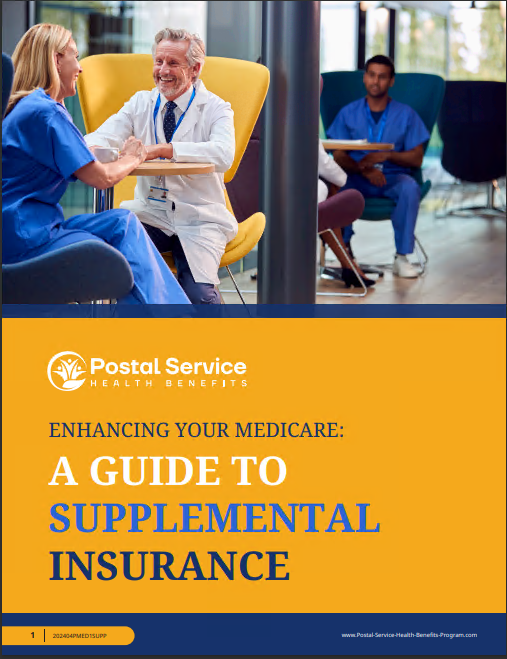Key Takeaways
-
The 2025 overhaul of the Postal Service Health Benefits (PSHB) Program is set to impact USPS employees and retirees nationwide, offering both opportunities and challenges.
-
Understanding how these changes affect costs and care will help you make the most of the new healthcare options during Open Season.
Change Is Coming to USPS Healthcare
The Postal Service Health Benefits (PSHB) Program, launching in 2025, is the most significant update to USPS employee healthcare in decades. This program replaces the Federal Employees Health Benefits (FEHB) Program for postal workers, retirees, and their families. While changes can be daunting, this overhaul promises a system more tailored to your unique needs.
From cost considerations to enhanced care options, there’s a lot to unpack. Let’s explore how this shift could affect your healthcare experience.
Why PSHB? What’s the Goal?
The move to PSHB isn’t just about switching programs; it’s about addressing specific USPS challenges:
-
Custom-Tailored Coverage: Unlike FEHB, which serves a broad federal workforce, PSHB focuses solely on USPS employees and retirees, ensuring benefits that reflect your job and lifestyle.
-
Cost Management: Rising healthcare costs have placed pressure on USPS finances. PSHB is designed to maintain high-quality care while improving cost efficiency.
-
Medicare Integration: For retirees, improved alignment with Medicare aims to reduce redundancies, lower out-of-pocket expenses, and streamline care.
Key Dates You Need to Know
To navigate the transition effectively, keep these dates in mind:
-
Open Season: November 11 to December 9, 2024. This is your chance to review, compare, and select your PSHB plan for 2025.
-
Effective Date: January 1, 2025. Your PSHB coverage officially begins, replacing your FEHB plan.
Mark these dates on your calendar now to avoid last-minute surprises.
What Makes PSHB Different From FEHB?
Tailored Healthcare Plans
PSHB plans are specifically designed with USPS employees and retirees in mind. This targeted approach means:
-
Relevant Coverage: Plans address occupational health risks and challenges unique to postal workers.
-
Geographic Adaptability: Coverage accounts for USPS employees working in remote or underserved areas.
Medicare Integration for Retirees
If you’re a retiree eligible for Medicare, the PSHB Program works closely with Medicare Part B to provide:
-
Seamless Coordination: Medicare handles primary care expenses, while PSHB supplements gaps, ensuring comprehensive coverage.
-
Predictable Costs: This integration can reduce out-of-pocket expenses and improve financial stability.
Who Needs to Take Action?
Current Employees
If you’re an active USPS employee, you may not feel the effects immediately, but staying informed is crucial. These changes will impact your future retirement and healthcare options. Understanding Medicare requirements and costs now will make your transition smoother down the line.
Retirees
For retirees already enrolled in FEHB, your transition to PSHB will be automatic. However, if you’re Medicare-eligible, there are critical considerations:
-
Medicare Part B Enrollment: Starting in 2025, most retirees must enroll in Medicare Part B to maintain PSHB coverage.
-
Exemptions: If you retired on or before January 1, 2025, and are not enrolled in Part B, you are exempt from this requirement.
What Does Medicare Part B Mean for You?
Medicare Part B plays a vital role in your PSHB coverage. Here’s how it works:
-
Primary Coverage: Medicare Part B covers doctor visits, outpatient services, and preventive care, while PSHB acts as secondary coverage for additional expenses.
-
Costs: The standard Medicare Part B premium for 2025 is $185 per month, with an annual deductible of $257. While these costs may seem high, the overall financial protection and enhanced benefits make it worthwhile.
The Benefits of PSHB Plans
Comprehensive Preventive Care
PSHB emphasizes preventive care, covering routine check-ups, screenings, and vaccinations. These benefits help you stay ahead of potential health issues, saving money and improving long-term health outcomes.
Expanded Mental Health Support
Recognizing the growing importance of mental well-being, PSHB plans include extensive mental health services such as counseling and therapy. This ensures mental health is prioritized alongside physical health.
Prescription Drug Coverage
Through integration with Medicare Part D, PSHB plans include a $2,000 annual cap on out-of-pocket prescription drug costs. This provides financial relief for those managing chronic conditions or expensive medications.
What to Focus on During Open Season
Open Season is your opportunity to evaluate your healthcare needs and make informed decisions. Here’s how to approach it:
-
Assess Your Current Plan: Consider how well your FEHB plan has served you and identify gaps or areas for improvement.
-
Compare PSHB Options: Look at premiums, deductibles, and covered services to find a plan that meets your healthcare and financial priorities.
-
Understand Medicare Enrollment: If you’re nearing Medicare eligibility, learn about enrollment timelines and costs to ensure compliance with PSHB requirements.
-
Reach Out for Help: Contact USPS HR or the Office of Personnel Management (OPM) for guidance if you have questions.
Common Questions About the Transition
Will I Lose Coverage During the Switch?
No. The transition from FEHB to PSHB is designed to be seamless. If you don’t make a selection during Open Season, you’ll be automatically enrolled in a corresponding PSHB plan.
Can I Keep My Current Doctors?
Most PSHB plans include extensive provider networks, but it’s always a good idea to confirm that your preferred doctors and specialists are covered.
What Happens If I Don’t Enroll in Medicare Part B?
If you’re Medicare-eligible and don’t enroll in Part B, you may lose your PSHB coverage. Understanding this requirement is critical to avoiding gaps in care.
Preparing for the Transition
Here’s how to make the transition as smooth as possible:
-
Stay Informed: Regularly check USPS and OPM communications for updates about PSHB.
-
Organize Your Documents: Keep important paperwork, like Medicare enrollment details and current healthcare plan information, easily accessible.
-
Set Reminders: Don’t miss deadlines for Open Season or Medicare enrollment. Mark them on your calendar and set alerts.
-
Communicate With Dependents: If your spouse or dependents are covered under your plan, ensure they understand how the changes affect them.
Why This Transition Is a Step Forward
While any significant change can feel overwhelming, the shift to PSHB offers real advantages:
-
Better Customization: Plans designed for USPS employees and retirees mean more relevant coverage and fewer unnecessary extras.
-
Cost Control: Medicare integration and out-of-pocket caps make healthcare expenses more predictable and manageable.
-
Enhanced Benefits: Comprehensive preventive care, mental health support, and robust drug coverage reflect modern healthcare priorities.
Navigating the Future of USPS Healthcare
The 2025 overhaul of the Postal Service Health Benefits Program is more than a change—it’s an opportunity to improve how you manage your health and finances. By understanding the new system, preparing during Open Season, and staying informed about Medicare requirements, you can ensure a smooth transition that meets your needs. Embrace the changes and make them work for you and your family.







